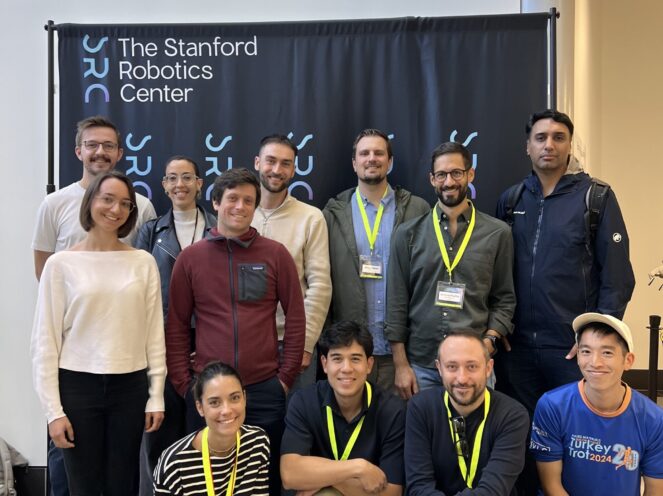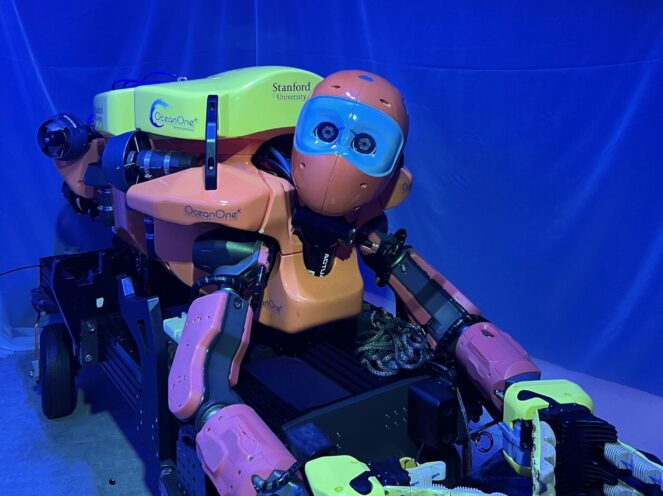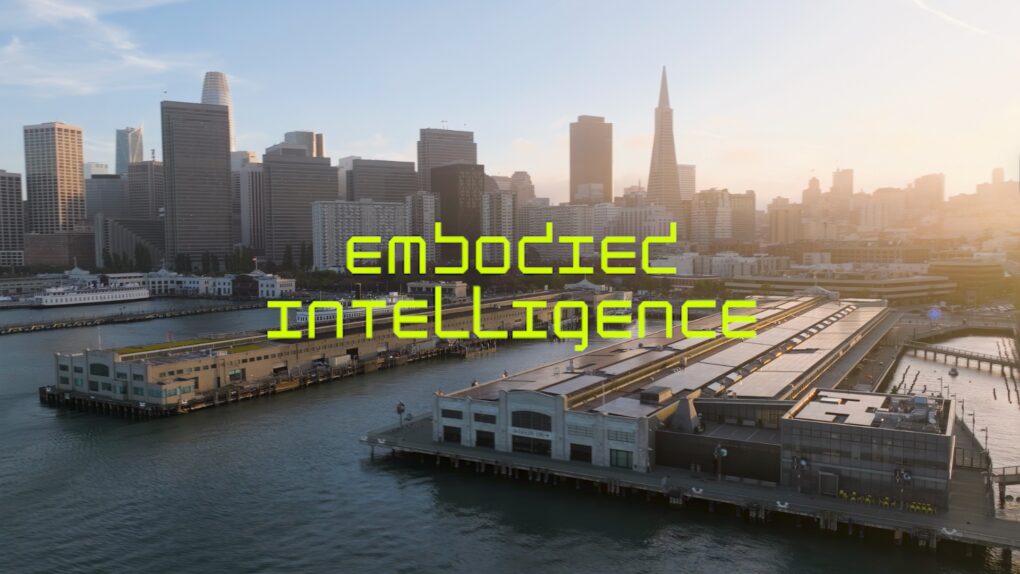
Maulde Cuérel
San Francisco – November 20, 2025
What was once the slower development of autonomous systems has accelerated and is increasingly referred to as the robotics renaissance. In Silicon Valley, this shift is visible everywhere: general-purpose manipulators in labs, humanoid startups attracting unprecedented capital, countless events and hackathons focused on robotics, talented engineers becoming the new superstars of the valley, and new simulation environments pushing the limits of training.
It is in this context that Swissnex in San Francisco hosted Embodied Intelligence: Brains, Bots & Borderless Innovation, a week-long immersion bringing together nine Swiss researchers and founders to explore the future of robotics and AI through the lens of Silicon Valley. From private visits to research labs and companies to public events with key players from the Bay Area, the group was able to learn from the ground while simultaneously showcasing their own research and projects to a local audience.
The participants brought with them a rich spectrum of what robotics and AI entailed, spanning from humanoid autonomy, adaptive locomotion, aerial manipulation, construction automation, social robotics, and neuroscience-inspired world models. These projects reflect a uniquely Swiss trait: deep scientific know-how paired with a love for precision.
The Bay Area has rapidly become the epicenter of “Physical AI”, a term popularized by NVIDIA CEO Jensen Huang to describe learning systems powered by AI becoming embodied, capable of acting in the physical world with increasing autonomy. Advances in sensors, simulation, generative AI, and GPU compute have converged to make this possible.
Meanwhile, research ecosystems like ETH Zurich, EPFL, IDSIA USI-SUPSI, often referred to as the “Silicon Valley of Robotics”, are driving new progress in locomotion, manipulation, and perception. Switzerland may be a small country, but its robotics ecosystem is remarkably dense. A quick glance at the last Swiss Robotic Days program says it all.
The Embodied Intelligence program served as a bridge between these two hubs at a pivotal moment, providing Swiss researchers with the opportunity to exchange and observe firsthand how Silicon Valley’s innovation engine operates.
Throughout the week, the cohort encountered robotics not as future visions but as active, evolving systems, having conversations with engineers, researchers, investors, and founders.
At Stanford University’s Robotics Center and Movement Lab, the group saw how robotics research is increasingly grounded in human motion, perception, and embodied interaction, with projects such as “Beyond Mimic,” a Real-world humanoid control via motion tracking and guided diffusion learning from human motions, or “TWIST,” a Teleoperated Whole-Body Imitation System.
Visits to Bay Area companies provided a complementary perspective: how robotic systems behave outside controlled settings. At Physical Intelligence, robotic arms folded towels, made coffee, and executed dexterous learning from experience, with the goal to bring general-purpose AI into the physical world. At OpenAI, the conversation shifted to how large multimodal models could underpin the next wave of entrepreneurs and startups. At Skydio, the largest manufacturer of drones and flying robots in the US, it was demonstrated how AI is leveraged by their team to make the company the world leader in autonomous flight.
Perhaps the most concrete manifestation of embodied AI came not in a lab, but in the streets of San Francisco: the cohort’s self-driving ride in a Waymo vehicle was a reminder of how robotics is already navigating public space, and rapidly expanding.
From October 27–31, 2025, Swissnex in San Francisco opened its doors for a week of exploration on how robotics and AI were transforming the way we live and work.
The program brought together startups, researchers, and thought leaders from the US and Switzerland who were pushing the boundaries of robotics, AI, and embodied systems.
Across conversations with U.S. researchers and founders, several insights emerged that are especially relevant for Swiss innovators:
This program reinforced Switzerland’s unique position in the global robotics landscape. While Silicon Valley moves fast, sometimes too fast, with its famous motto “Move fast and break things,” Switzerland excels in precision and reliability. Together, these approaches are not opposites but complements. When brought together thoughtfully, they offer a powerful blueprint for the future of robotics, one grounded in both ambition and responsibility.
Swissnex has long served as a bridge between ecosystems, and Embodied Intelligence demonstrated the value of structured immersion at a moment when robotics is expanding and accelerating.
What the cohort observed in Silicon Valley will inform research trajectories, startup strategies, and collaborations.
Maulde Cuérel






